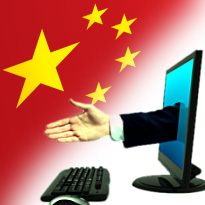 Mashable recently published a profile of ecommerce in China that online gambling companies – at least, those interested in grabbing a piece of this mammoth market – will want to check out. Like most stories about China, it’s worth starting with the sheer scale of its digital presence. Boston Consulting Group (BCG) already ranks China’s online shopping population (193m) ahead of any other country (the US figure is 170m). By 2015, BCG estimates the individual Chinese online shopper’s annual spending will reach the current US average of $1k. Combined with an expected rise in the percentage of Chinese internet users who shop online from its current 36% to 47% by 2015, the estimated $420b ecommerce market would constitute 8% of all retail sales in China.
Mashable recently published a profile of ecommerce in China that online gambling companies – at least, those interested in grabbing a piece of this mammoth market – will want to check out. Like most stories about China, it’s worth starting with the sheer scale of its digital presence. Boston Consulting Group (BCG) already ranks China’s online shopping population (193m) ahead of any other country (the US figure is 170m). By 2015, BCG estimates the individual Chinese online shopper’s annual spending will reach the current US average of $1k. Combined with an expected rise in the percentage of Chinese internet users who shop online from its current 36% to 47% by 2015, the estimated $420b ecommerce market would constitute 8% of all retail sales in China.
There are a number of factors contributing to this growth, chief among them the Chinese government’s rapid expansion of high-speed internet infrastructure and the explosive growth in internet-savvy mobile phones, which together are expected to boost the number of Chinese online from the current 513m to 701m by 2015 (twice that of the US and Japan combined). Even that will represent only 51% of China’s population – compared to the 83% penetration rate in the US – leaving plenty of room for further growth.
WORD OF MOUTH SPEAKS VOLUMES
Chinese online shoppers make more use of online reviews than their western counterparts. BCG estimates that over 40% of Chinese online shoppers both read and write online product reviews – twice the US rate. Calvin Soh, the award-winning former chief creative officer of ad agency Publicis Asia, believes the Chinese aversion to heavy-handed marketing pitches stems from being too long on the receiving end of government propaganda. (The recent image of the ‘floating’ civil servants inspecting a landscaping project on the Zhejiang Hangzhou Yuhang government website shows the authorities’ willingness to Photoshop/stretch the truth extends even to everyday mundane matters.)
The quest for unbiased opinions means Chinese shoppers are also more dedicated users of social media. A McKinsey study released last month showed 91% of respondents in China’s Tier 1, 2 and 3 cities visited a social media site in the past six months, compared to 67% in the US and 30% in Japan. Chinese netizens also spent more time on average (46 minutes per day) visiting social media sites than their counterparts in the US (37) and Japan (7).
According to WeAreSocial, the most popular Chinese social media sites in terms of sheer numbers of users are (in descending order): MySpace-clone Qzone, microblogging sites Tencent Weibo and Sina Weibo, plus Facebook-styled sites Renren (favored by students) and Kaixin (favored by white collar workers). Sina Weibo was tipped as appealing to a higher-income demographic.
BRAND VALUES
The BCG number crunchers also addressed the Chinese interest in luxury brands. Using fashion as an example, BCG described the Chinese shopper as “hungry for highly recognizable brands.” Yet despite their best efforts, many mid-range brands that are ubiquitous in the west (Gap, Abercrombie & Fitch) have yet to make an impression on China, according to Angelia Teo, Asia-Pacific content director at trend forecasting agency WGSN. “China understands luxury and heritage, it understands best-in-class product … you have to offer craft or technique or a unique point-of-view.”
To sum up, online gambling companies looking to establish a lasting presence in China need to do three things: treat your customers right (because they will be talking about you online), effectively engage Chinese netizens via social media and bring a strong brand identity to the table. The first two are things you can work on. The third? It’s sorta like rhythm, style or cool. You either got it or you ain’t.